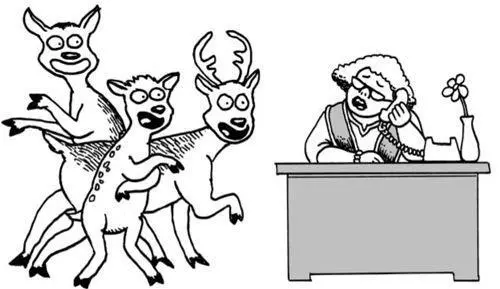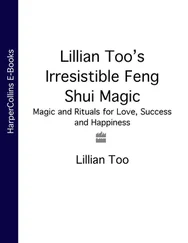Tan, Chade-Meng - Search Inside Yourself - The Unexpected Path to Achieving Success, Happiness (and World Peace)
Здесь есть возможность читать онлайн «Tan, Chade-Meng - Search Inside Yourself - The Unexpected Path to Achieving Success, Happiness (and World Peace)» — ознакомительный отрывок электронной книги совершенно бесплатно, а после прочтения отрывка купить полную версию. В некоторых случаях можно слушать аудио, скачать через торрент в формате fb2 и присутствует краткое содержание. Год выпуска: 2012, Издательство: Harper Collins, Inc., Жанр: Старинная литература, на английском языке. Описание произведения, (предисловие) а так же отзывы посетителей доступны на портале библиотеки ЛибКат.
- Название:Search Inside Yourself: The Unexpected Path to Achieving Success, Happiness (and World Peace)
- Автор:
- Издательство:Harper Collins, Inc.
- Жанр:
- Год:2012
- ISBN:нет данных
- Рейтинг книги:4 / 5. Голосов: 1
-
Избранное:Добавить в избранное
- Отзывы:
-
Ваша оценка:
- 80
- 1
- 2
- 3
- 4
- 5
Search Inside Yourself: The Unexpected Path to Achieving Success, Happiness (and World Peace): краткое содержание, описание и аннотация
Предлагаем к чтению аннотацию, описание, краткое содержание или предисловие (зависит от того, что написал сам автор книги «Search Inside Yourself: The Unexpected Path to Achieving Success, Happiness (and World Peace)»). Если вы не нашли необходимую информацию о книге — напишите в комментариях, мы постараемся отыскать её.
Search Inside Yourself: The Unexpected Path to Achieving Success, Happiness (and World Peace) — читать онлайн ознакомительный отрывок
Ниже представлен текст книги, разбитый по страницам. Система сохранения места последней прочитанной страницы, позволяет с удобством читать онлайн бесплатно книгу «Search Inside Yourself: The Unexpected Path to Achieving Success, Happiness (and World Peace)», без необходимости каждый раз заново искать на чём Вы остановились. Поставьте закладку, и сможете в любой момент перейти на страницу, на которой закончили чтение.
Интервал:
Закладка:
Making Profits, Rowing Across Oceans, and Changing the World
The Art of Self-Motivation
The most venerable, clearly understood, enlightened, and reliable constant in the world is not only that we want to be happy, but that we want only to be so. Our very nature requires it of us.
—Saint Augustine

For this chapter to work, we need to enlist a motivation expert. Fortunately, we found that person, and that person is you. You are the world’s top expert at figuring out what motivates you. You already know your deepest values and motivations. In this chapter, all we are doing is helping you discover them.
Pleasure, Passion, and Higher Purpose
Tony Hsieh is an inspiration to me. At the young age of twenty-four, Tony sold LinkExchange, the company he cofounded, to Microsoft for $265 million. He later became the CEO of Zappos and grew it from almost nothing to a company with a billion dollars in annual sales. But his entrepreneurial success is not what inspires me. What really inspires me is his wise, skillful, and courageous use of happiness in a corporate setting. Tony figured out that the secret to Zappos’ success is “Delivering Happiness”, which is also the title of his book. He created a corporate culture that is conducive to employee happiness; happy employees then provide customers the best customer service in the industry, and happy customers spend more money at Zappos. In other words, happiness is not just something nice to have; it is also the centerpiece of Zappos’ business strategy and the foundation of its business success. That is really inspiring.
Tony has great insights in the process of happiness in the context of work. He describes three types of happiness: pleasure, passion, and higher purpose. 1
1. Pleasure: This type of happiness is about always chasing the next high. It is the rock-star type of happiness because it is very hard to maintain unless you are living the lifestyle of a rock star.
2. Passion: Also known as “flow,” where peak performance meets peak engagement, and time flies by.
3. Higher Purpose: This is about being part of something bigger than yourself that has meaning to you.
One interesting feature about these three is their varying sustainability. The happiness that arises from pleasure is highly unsustainable. Once the pleasurable stimulus ceases, or if you habituate to it, then your happiness returns to your default set point. Happiness that arises from flow is much more sustainable and you are far less likely to habituate to it. Happiness arising from higher purpose, in contrast, is highly sustainable. In Tony’s and also my own experience, this form of happiness is very resilient and can last for a very long time, especially if that higher purpose has an altruistic origin.
Interestingly, we instinctively chase after pleasure believing it to be the source of sustainable happiness. Many of us spend most of our time and energy chasing pleasure, sometimes enjoying flow, and once in a while, we think about higher purpose. Tony’s insight suggests we should be doing precisely the reverse. We should be spending most of our time and energy working on higher purpose, sometimes enjoying flow, and every now and then, savoring rock-star pleasure. This is the most logical path toward sustainable happiness, at least in relation to our work.
This insight also suggests the best way to find motivation at work is to find our own higher purpose. If we know what we value most and what is most meaningful to us, then we know what we can work on that serves our higher purpose. When that happens, our work can become a source of sustainable happiness for us. We can then become very good at our work because we are happy doing it, which in turn allows us to enjoy the happiness of flow with increasing frequency. Finally, when we become really good at our work, we may gain recognition. Occasionally, we may even get it in a massive dose, such as a big bonus, a special mention by a company vice president, a story on the New York Times , or an expression of gratitude from the Dalai Lama. This is the occasional rock-star pleasure experience that serves as icing on our motivational cake. Once we are working toward fulfilling our higher purpose, the work itself is the reward (but still, the occasional, fat bonus check is very nice, in case you are wondering, boss).
Motivation in Three Easy Steps
In this chapter, we will introduce three practices for motivation:
1. Alignment: Aligning our work with our values and higher purpose
2. Envisioning: Seeing the desired future for ourselves
3. Resilience: The ability to overcome obstacles in our path
Combined, we hope these practices constitute a complete package of tools to help you find out how you want your life to unfold and to navigate the path to get there.
Alignment
Having Fun for a Living
Alignment means aligning our work with our values and higher purpose.
Half jokingly, I think of alignment as finding a way to never have to work again for the rest of your life and still get paid. The secret is to create a situation in which your work is something you do for fun, so you are doing it for your own entertainment anyway and somebody just happens to pay you for it (and since you are nice to them, you do not want to say no to their money). I know of many successful and highly productive people in this situation. Warren Buffett is a famous example, still working … er … having fun at work in his eighties. Norman Fischer once told me he has never worked a single day in his life, even though he is one of the most sought-after Zen teachers in the country and is busier than most Silicon Valley professionals I know. Closer to home, most of the best engineers I have worked with write code as a hobby, so they really just come to the office to hobby away and get paid.
Work of this nature has at least one of these two qualities, very often both:
1. The work is deeply meaningful to you
2. It generates a state of flow in you
This is, of course, in perfect alignment with Tony Hsieh’s pleasure, passion, and higher purpose framework.

Flow
Flow is so important, it is worth mentioning in some detail. Daniel Goleman calls it “the ultimate motivator.” Flow is a state of peak performance discovered by Mihaly Csikszentmihalyi, who spent more than two decades studying it in individuals. Csikszentmihalyi describes it as “being completely involved in an activity for its own sake. The ego falls away. Time flies. Every action, movement, and thought follows inevitably from the previous one, like playing jazz. Your whole being is involved, and you’re using your skills to the utmost.” 2Athletes know this state as being in the zone. Flow has been reported widely in a very diverse number of fields, such as climbing rocks, performing brain surgery, filing papers, and even in sitting meditation (in fact, one way to think of flow is as Zen in action).
Flow occurs when the task at hand matches the skill level of the practitioner, such that it is difficult enough to provide a challenge but not so difficult that it overwhelms the practitioner. If the task is too easy relative to skill level, the practitioner will be bored or apathetic. In contrast, if it is too difficult, the practitioner becomes anxious or worried. Flow occurs when difficulty is just right.
Читать дальшеИнтервал:
Закладка:
Похожие книги на «Search Inside Yourself: The Unexpected Path to Achieving Success, Happiness (and World Peace)»
Представляем Вашему вниманию похожие книги на «Search Inside Yourself: The Unexpected Path to Achieving Success, Happiness (and World Peace)» списком для выбора. Мы отобрали схожую по названию и смыслу литературу в надежде предоставить читателям больше вариантов отыскать новые, интересные, ещё непрочитанные произведения.
Обсуждение, отзывы о книге «Search Inside Yourself: The Unexpected Path to Achieving Success, Happiness (and World Peace)» и просто собственные мнения читателей. Оставьте ваши комментарии, напишите, что Вы думаете о произведении, его смысле или главных героях. Укажите что конкретно понравилось, а что нет, и почему Вы так считаете.







![Chade-Meng Tan - Search Inside Yourself - Increase Productivity, Creativity and Happiness [ePub edition]](/books/703803/chade-thumb.webp)



